

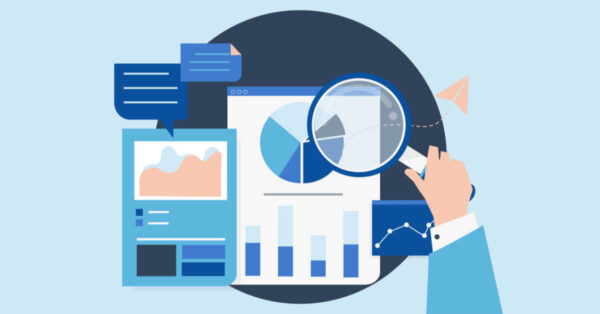
DYOR Crypto Fundamental Analysis Series
Part One – A Post-Mortem of a Cryptocurrency, and Dissection of Red Flags
Part Two – “How Sherpa Got His Groove Back”
Part Three – The NFT One
Part Four – Scams, Hacks, and Hoodwinks!
Hello again, climbers of shitcoin mountain. Sherpa here. If you’ll remember, last week we went over a few easy tips for finding red flags before you ape into a project. Last week was about stalking the dev team & social media channels/search engines for potential warning signs.
This week I’ll show you a few great tools & sites for researching fundamentals. Santiment is a crypto analytics platform that offers a suite of tools & user-submitted insights for analyzing projects, social media hype/keywords, and dozens of indicators to see the nitty-gritty of crypto projects – usually ERC-20 tokens.
They also have a number of tools that are subscription-based, but let’s look at the free ones that are available to every user.
On the charts page, you can select the asset you want to look at. In this case, I used one of my old favorites, Sentivate.
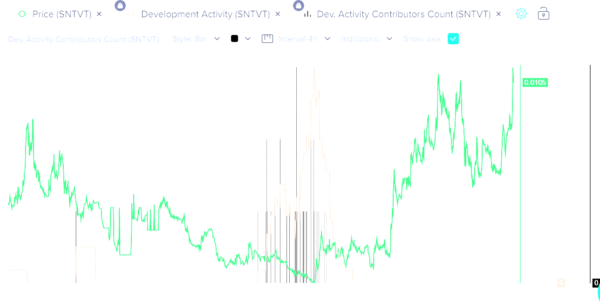
Just by setting two indicators, “Dev Activity”, and “Dev Activity Contributors Count” you can see how active a project’s Github is. This isn’t always the best indicator of “quality work”, as some projects might try to game the system, but it at least lets you know activity over time & activity by contributors – which can indicate adoption & development.
I interviewed the lead developer of Sentivate a couple of years back, and it’s fun to see what I know playing out on this chart. If you look to the bottom-left, you can see a big block of activity, with a spike in contributors. From speaking with Tom, I know that he preferred to only include quality code in big chunks for his releases, early on.
You can see how that has evolved over time, as more developers contribute to the project. Instead of batch releases, you see more frequent spikes in development along with spikes in contributors.
This is how you want a project to look, upon inspection. If their Github is literally just their initial smart contract, then either they’re not open-sourcing the real innovations, or, more often, there are none. Crypto projects spike on hype, but long-term growth comes from long-term development. Yes, it’s that simple.
The next tool I want to take a look at is something we should all be familiar with, Etherscan.
Now, you’ve probably glanced at Etherscan to check out how a transaction is going, or if it has been confirmed. But for fundamental analysis, it is a quick & more importantly – free resource in helping you determine a project’s strengths or red flags.
Let’s give it a try choosing another token at random. Bitboost is what I ended up with. Now, I don’t know anything about this project. But let’s see what our detective skills can find while looking at their Etherscan data.
First, let’s look at “Holders”:
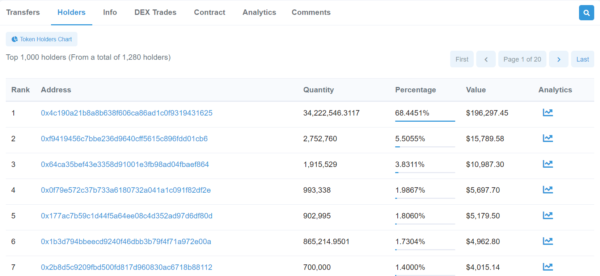
Is anything standing out to you? Right off, we can see that out of a total supply of 50,000,000 tokens – one address holds over 34,000,000 of them. In some cases, this could be the biggest exchange, or a related smart contract for distribution – but this isn’t the case, here. You’ll see a little paper icon next to the address, if it belongs to a smart contract.
So either one exchange holds over ⅔’s of the total supply, or the team/developer owns them. In either case, you’re swimming with a possible killer whale. You will always have whales, but the more active holders (this shows around 1,200) the less likely it is that one person will be dumping the entire supply on you.
Next, let’s click on the contract address in the upper-right corner, and move on over to the “Contract” heading. Don’t worry! I’m not about to tell you to “learn to code, bruh” in order to examine contracts better (that comes later winkingsmileyface), but there are a LOT of things you can do without knowing a single thing about code. Check it out:
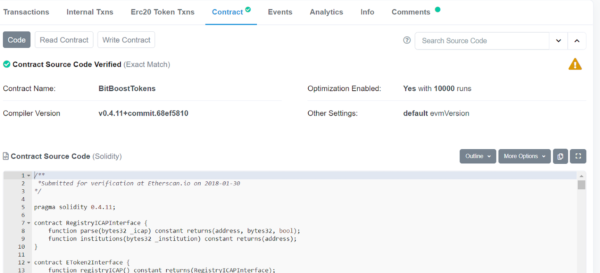
Right off the bat, you can see that the source code has been verified by Etherscan. So it isn’t being hidden, and is open for scrutiny. This is good. Let’s click on “More Options” over to the right.
This is where it gets juicy.
Click “Similar”
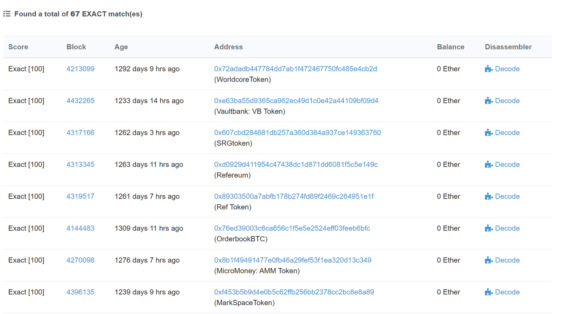
As you can see, there are SIXTY-SEVEN projects using THE EXACT SAME source code. This is about as cut & dry as it gets when it comes to crypto red flags. It is likely a copy of a copy of a copy of a copy of a copy of a scam. You would not believe how many projects you can cross off your “DUE DILIGENCE CHECKLIST” just by looking at this one page on Etherscan.
From here, try playing around with Etherscan a bit. If we’re talking about projects built or tokenized on the Ethereum blockchain – there is literally no better tool than Etherscan. You just have to learn how to use it. Be sure to “smash that sub” or whatever it is the kids are saying, these days. I’ll be back next week for another dive into the fun parts of fundamental analysis.

Torrent/seedbox aficionado, decentralist, cultural archivist, fundamental analyst, podcast addict, shitcoin-sifter extraordinaire
Tip Jar
BTC: bc1qahxrp47hpguhx8y8r382dekgca34tlv54aufht
Doge: DJRy9gGSUGeyXfVcZXzKLkBv7RmDLv3MhJ
Share This Article
Join 10,000+ forward thinkers! Get crypto education in your inbox.